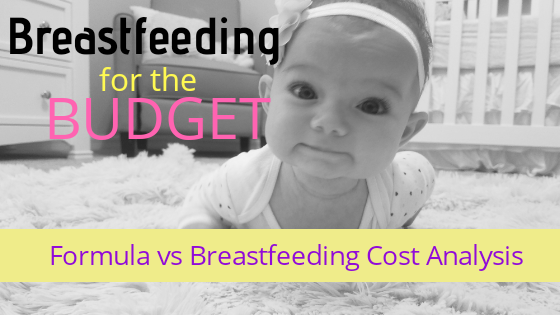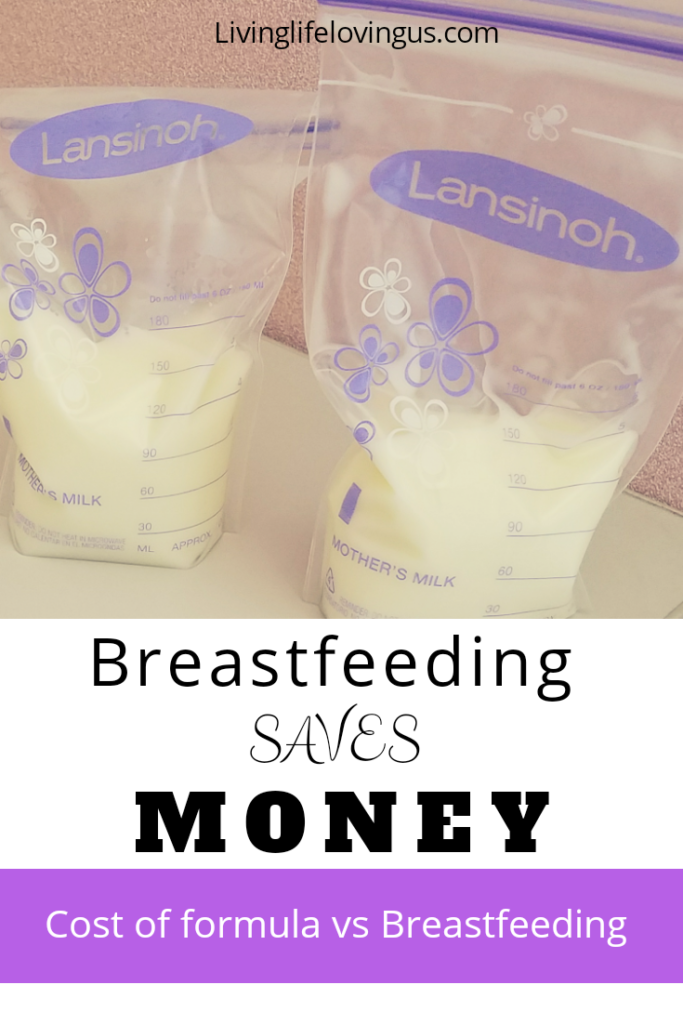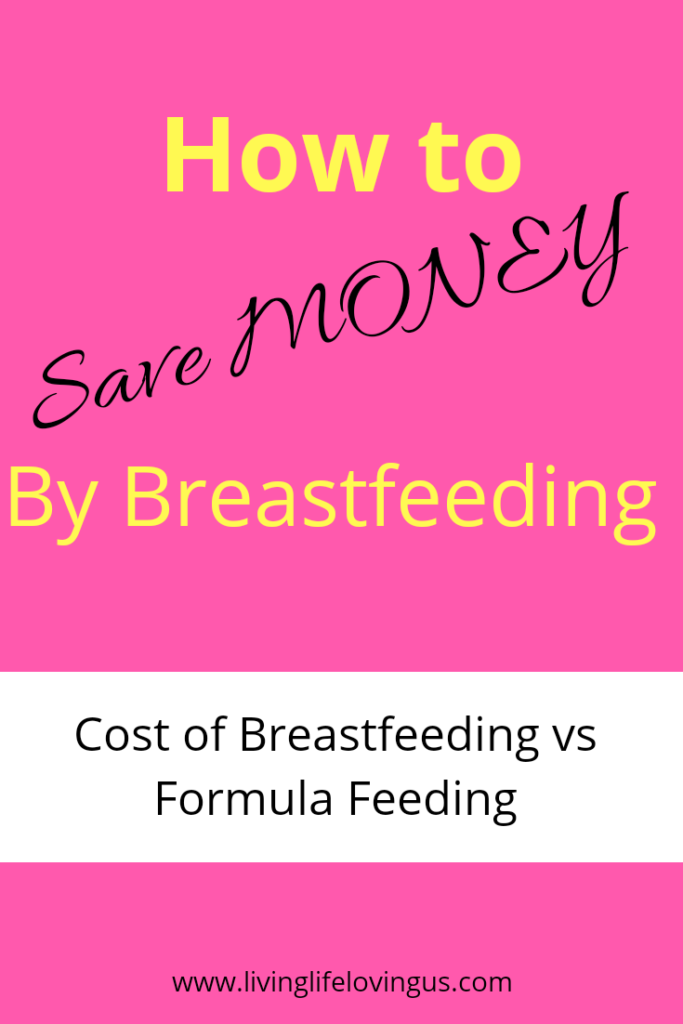Breastfeeding comes with health benefits that most know about, but do you think breastfeeding can save you money?
****Whether breastfeeding or formula feeding your baby is a very personal choice. Aside from choice, breastfeeding may not be an option for some moms whose milk doesn’t come in or they don’t make enough to keep up with the baby. Therefore, this post’s intention is not to sway you one way or another, but to provide facts and our own personal journey.****
Most moms know the health benefits of nursing for both themselves and for the baby, but these days another factor is being taken in to account – cost. Some families need to cut expenses due to the increased cost of living, others simply choose to decrease their spending in all aspects of life, and others are just curious are just curious exactly how much formula will cost them. Whatever the reason is, looking at breastfeeding from the budget saving perspective is certainly something to be taken in to consideration.
Save Money on Formula
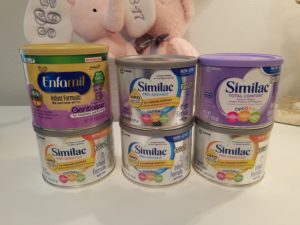
Formula. Just like everything in the baby world the cost varies depending on whether you go with generic brand which is around $0.11 per ounce or higher end brand names at upwards of $0.60 per ounce. Most babies cannot tolerate the cheap, generic brands, and some even require a specialty formula costing hundreds, even thousands, of dollars per month. For arguments sake we’ll take an average and look at approximately $0.20 per ounce for formula cost.
Government programs pass out hundreds of millions of dollars worth of formula per year. There is a combination of lack of education regarding breastfeeding, inability to breastfeed due to the need to go back to work, and, of course, if the mother is unable to breastfeed.
The American Academy of Pediatrics recommends breastfeeding exclusively for the first 6 month and then continue nursing for at least the first year. Taking in to account the average ounces per day a baby takes in with the average cost per ounce of formula that brings your yearly total for formula to anywhere between $750 per year and over $3,500 per year. Looking at our $0.20 average let’s just call it $1,700 per year for the first year of baby’s life.
$1,700 dollars. In the world of budgeting where “small saves make the big differences”, $1,700 is A LOT of money. That’s assuming an average cost and an average amount your baby is eating. Subtracting $150 or so from the monthly budget is a win for breastfeeding! As an added bonus, studies have shown that breast fed babies tend to have fewer medical visits such as ear infections and colds. An additional savings.
Save Money on Medical Visits
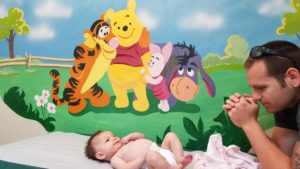
The health and financial benefits of breastfeeding seem to blend right together. While there is no guarantee that a breastfed child will have less illnesses than a formula fed child, research has shown that there is a DRASTIC and proven decrease. According to a study by the Health Maintenance Organization, families will save $1,400 per year on medical costs with a breastfed baby vs a formula fed baby. Why?
The answer is actually really really cool. Moms have this incredible ability to adjust the contents of their breastmilk in order to meet the needs of the baby. The baby’s saliva enters the mother’s body through the nipple, is analyzed and the mom’s body responds by adjusting nutrients including fat content, carb content and even immunities. That means if mom or baby get a cold, mom’s body goes in to overdrive to produce any antibodies she may have to fight back that cold for baby.
The rationale for why babies get less ear infections isn’t quite as neat of an answer. It’s very simple in fact. Two reasons. One, less colds means less snot and less snot means less ear infections. A baby has a bit of a different anatomy than an adult and the way the tubes to their ears are positioned make them more prone to ear infections than adults. So when they are filled with congestion the fluid backs up in to their ears easily. Second reason is when a baby is breastfed the position in which a mom holds the baby is usually tilted up right while many bottle fed babies are more likely to eat lying flat allowing the milk to back up in their ears. Regardless of the reason breastfed babies simply get less ear infections and less sicknesses in general. Less sickness means less medical visits. Less medical visits means less money.
The Breakdown
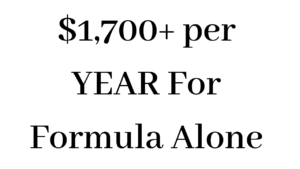
Though it can be argued that the supplies “needed” for breastfeeding can nearly reach the cost of formula feeding I find that to be untrue. Right now I am in the time of life where EVERYONE around me has a baby. Some are breastfed, some formula fed, and some do a combination of the two. The breastfeeding moms report spending significantly less than those who are using formula. This can also vary based on personality as well. Stay tuned for my Must Have Breastfeeding Essentials: A Budgeter’s View which will highlight wants vs NEEDS of breastfeeding.
The majority of moms who breastfeed will never 100% exclusively feed baby from the breast with EVERY feeding. This means that yes, there will be a cost for bottles, but only a few are needed. Yes, there is a cost for storage bags for the milk, but these are relatively inexpensive and I’ll tell you a little tip. Use the bottles to store the milk and only use bags for the excess you’re going to freeze. In over a year of breastfeeding I have spent a total of $22 on breastmilk bags. Just because you can MAKE breastfeeding expensive doesn’t mean that it should be.
Jennifer Schultz wrote an incredible article for US News on ways to cut breastfeeding costs and her site Hintmama.com is filled with money saving tips and ways to make both breastfeeding OR formula feeding and many other things so much easier.
Tips to keep breastfeeding cost down:
- Use ice cube trays to freeze leftover milk instead of breastmilk freezer bags.
- Skip hands free nursing bras for pumping.
- Don’t buy an entire wardrobe JUST for breastfeeding.
- Use a large scarf or muslin blanket instead of a special breastfeeding cover.
- Buy your pump through insurance. Not an option? Purchase a pump second hand, maybe from a friend, and purchase new tubing and accessories.
- Don’t buy every accessory you see. Figure out what you NEED as you go.
- A full MUST HAVE list: The Essentials of Breastfeeding: A budgeter’s review of top breastfeeding items.
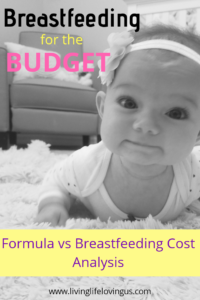
While breastfeeding may pose a challenge, especially for working moms who need to pump, most consider the benefits to outweigh the occasional inconvenience. And those pumps, though they can be expensive, are covered by most insurance companies. Even for the ones who cannot get it covered, they find the one time cost of the pump to far outweigh the yearly cost of formula. With all of the expenses included in a new little member of your family, it’s important to see all of your options.
“Baby’s are Expensive”
Baby’s are expensive, but our family chose to not let them be as expensive as the rest of the country likes to believe they are. One of our choices was breastfeeding. While I will be the first to tell you the journey was quite difficult in the beginning with basically every hurdle you could imagine including poor milk supply, bad latch, mastitis, and nipples that I didn’t recognize, I will also be the first to tell you that it is the most rewarding experience. It saved me time, aggravation of bottles and carrying around formula, and as a bonus – Money.
So while cost should never be your primary reason for choosing to breastfeed, it is certainly something to consider!
-
Must Haves for Traveling with Babies and Toddlers
-
How to Pack a Carry on for Baby
-
No Sleep?
-
Surviving Traveling with a Toddler
-
Top 10+ Breastfeeding Must Haves
Want more from Living Life Loving Us? Sign up below for FREE updates and extra tips!
